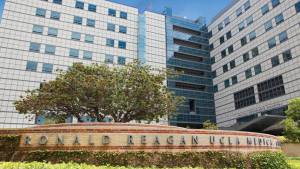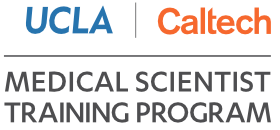
The DGSOM HEALS (Healer, Educator, Advocate, Leader, Scholar) curriculum integrates new teaching and learning paradigms to keep pace with rapid changes in medicine and science. Didactic learning is combined with authentic clinical experiences from the first day of medical school. Unlike the prior legacy curriculum (2 years didactics + 2 years of clinical training), pre-clinical didactics is truncated to a 13-month MS1 year with core clinical rotations in the MS2 year (Figure 3). The MS3 year provides for nine months of self-directed scholarly activity (aka “Discovery year”) in an area of chosen focus (e.g., research, health advocacy, global health, etc.) The MS4 year prepares students for residency training with sub-internships and clinical and research electives. A more detailed description of the HEALS Curriculum can be found on the DGSOM website.
MSTP students enter the graduate school phase of their training after MS2 year and having completed most of their core clinical clerkships. This substantial clinical exposure helps establish physician-scientists identity early in training and informs the choice and direction of their PhD research. MSTP students also remain engaged in longitudinal clinical activities across the course of their PhD training. With the streamlining of combined degree training within the DGSOM HEALS curriculum, most students are able to graduate from the UCLA-Caltech MSTP in 7-8 years.
MS1
Medical school begins with Base Camp, a month-long introductory course that acclimates students to the rigors of medical school. Its preparatory courses examine social determinants of health, ethics, professionalism and introductory clinical skills, and basic science concepts. The remainder of MS1 year involves three concurrent curricular threads: Scientific Foundations of Medicine (SFM), Foundations of Practice (FOP), and Early Authentic Clinical Experience (EACE).
MS2
Forty weeks of mandatory core clinical clerkships are organized in modular four-week blocks that allow for significant flexibility in sequencing and scheduling. Core clerkships include Emergency Medicine, Pediatrics, Neurology, Psychiatry, Family Medicine, and Obstetrics and Gynecology (four weeks each), as well as Surgery and Medicine (each eight weeks long in two consecutive 4-week blocks). Clerkships occur in diverse clinical settings, including UCLA Health hospitals, the West LA and Sepulveda Veterans Administration Hospitals, Harbor and Olive View Medical Centers (UCLA-affiliated academic county hospital facilities with large, underserved populations), or Cedars-Sinai Hospital (a private hospital). Five one-week intersessions in the MS2 year are held between each of two four-week blocks. Intersessions include didactic curricular activities designed to leverage clerkship experiences and expand on knowledge and skills learned during MS1. MSTP students defer two blocks of their MS2 core clerkships until after the PhD in order to complete a research lab rotation.
MS3
MSTP students pursue PhD training in lieu of the MS3 Discovery Year.
MS4
Students complete a minimum of 30 weeks of electives that must include 24 weeks of clinical electives and outpatient/inpatient sub-internships. MSTP students also complete their two deferred core MS2 year clerkship blocks. MSTP students can choose to devote nonclinical elective time to return to their labs or engage in experiential learning (e.g., internships in industry or government). A final capstone course in the spring emphasizes preparedness for the internship year, providing practical clinical knowledge and discussion on topics ubiquitous to early clinical practice.

